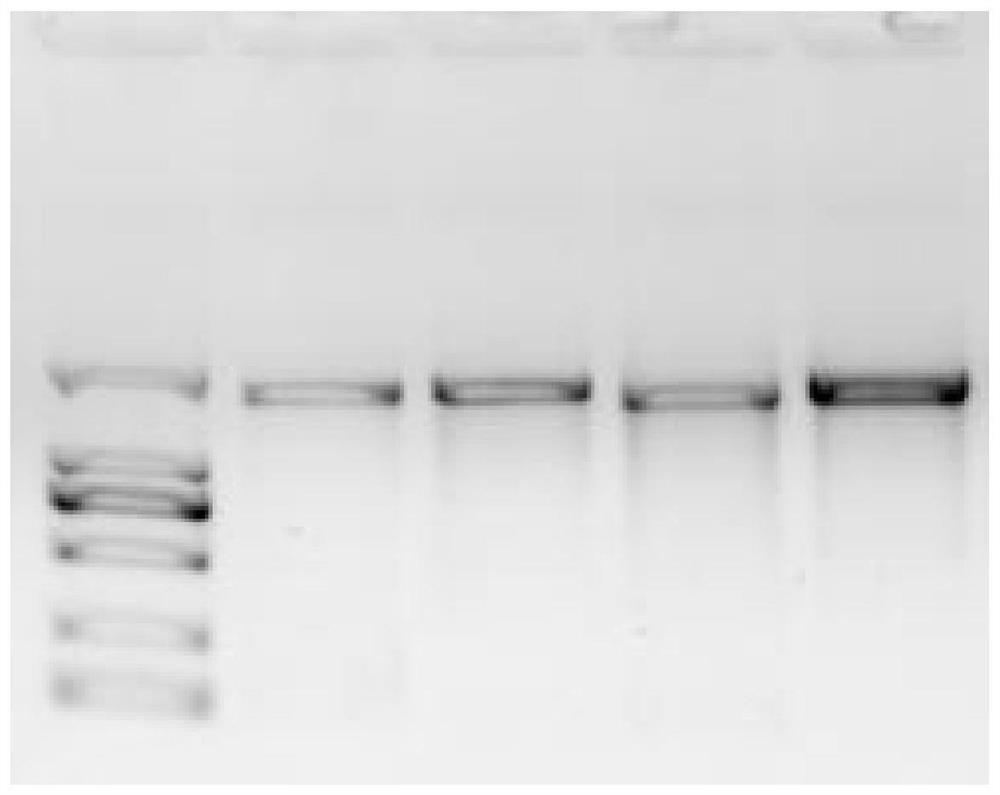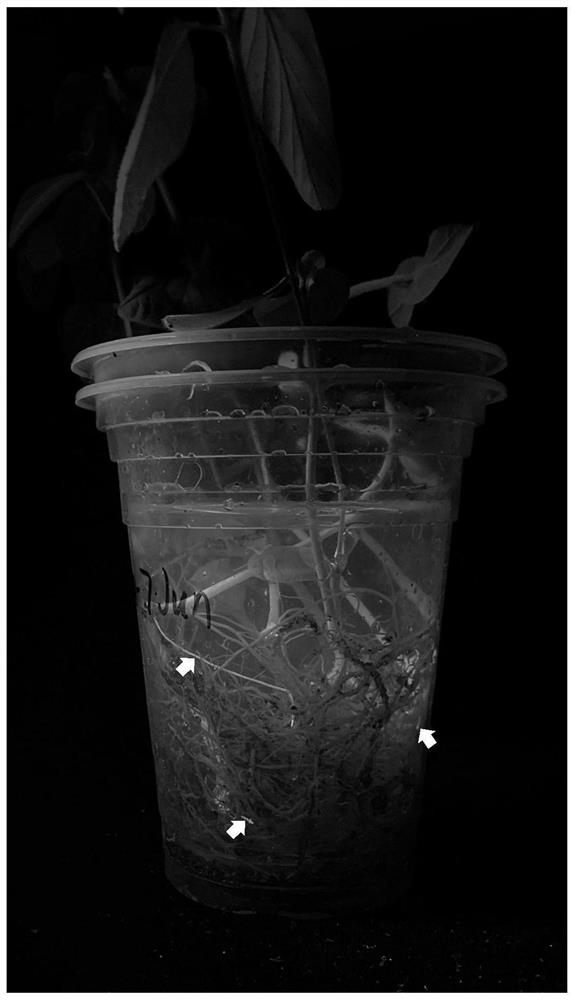Gene expression cassette, recombinant expression vector and preparation method and application thereof
A technology of gene expression cassettes and expression vectors, applied in the field of genetic engineering, can solve the problems of plant lethality, unsuitable hairy root screening, etc., and achieve high transformation efficiency
- Summary
- Abstract
- Description
- Claims
- Application Information
AI Technical Summary
Problems solved by technology
Method used
Image
Examples
Embodiment 1
[0046] A method for preparing a recombinant expression vector, comprising the following steps:
[0047] (1) Insert the promoter Gmubi between the CaMVpoly(A) signal and the NOS terminator of the initial vector pCAMBIA1303 to obtain Vector-P;
[0048] (2) insert the egfp reading frame between the promoter of Vector-P obtained in step (1) and the NOS terminator, obtain Vector-P-E;
[0049] (3) Insert the coding sequence of the F2A peptide between the egfp reading frame of the Vector-P-E obtained in step (2) and the NOS terminator, to obtain Vector-P-E-2A;
[0050] (4) between the 2A peptide coding sequence of Vector-P-E-2A obtained in step (3) and the NOS terminator, insert a multi-site artificial linker sequence to obtain the recombinant expression vector Vector-P-E-2A-MCS, the nucleoside of the vector The acid sequence is shown in SEQ NO: 4; the insertion method is double enzyme digestion (connection uses T4 ligase).
Embodiment 2
[0052] A method for preparing a recombinant expression vector, comprising the following steps:
[0053] (1) Insert the promoter GmubiXL between the RB T-DNArepeat and the NOS terminator of the initial vector pBI121 to obtain Vector-P;
[0054] (2) insert the egfp reading frame between the promoter of Vector-P obtained in step (1) and the NOS terminator, obtain Vector-P-E;
[0055] (3) insert the coding sequence of T2A peptide between the egfp reading frame of Vector-P-E obtained in step (2) and the NOS terminator, obtain Vector-P-E-2A;
[0056] (4) Inserting a multi-site artificial linker sequence between the 2A peptide coding sequence and the NOS terminator of Vector-P-E-2A obtained in step (3) to obtain the recombinant expression vector Vector-P-E-2A-MCS; wherein the insertion method is Double digestion (ligation using T4 ligase).
Embodiment 3
[0058] A method for preparing a recombinant expression vector, comprising the following steps:
[0059] (1) Insert the NOS terminator into the MCS of the initial vector pPZP100, and insert the promoter Gmubi between the NOS terminator and LB T-DNArepeat to obtain Vector-P;
[0060] (2) insert the egfp reading frame between the promoter of Vector-P obtained in step (1) and the NOS terminator, obtain Vector-P-E;
[0061] (3) Insert the coding sequence of P2A peptide between the egfp reading frame of Vector-P-E obtained in step (2) and the NOS terminator, obtain Vector-P-E-2A;
[0062] (4) Inserting a multi-site artificial linker sequence between the 2A peptide coding sequence and the NOS terminator of Vector-P-E-2A obtained in step (3) to obtain the recombinant expression vector Vector-P-E-2A-MCS; wherein the insertion method is Double digestion (ligation using T4 ligase).
PUM
 Login to View More
Login to View More Abstract
Description
Claims
Application Information
 Login to View More
Login to View More - R&D
- Intellectual Property
- Life Sciences
- Materials
- Tech Scout
- Unparalleled Data Quality
- Higher Quality Content
- 60% Fewer Hallucinations
Browse by: Latest US Patents, China's latest patents, Technical Efficacy Thesaurus, Application Domain, Technology Topic, Popular Technical Reports.
© 2025 PatSnap. All rights reserved.Legal|Privacy policy|Modern Slavery Act Transparency Statement|Sitemap|About US| Contact US: help@patsnap.com



